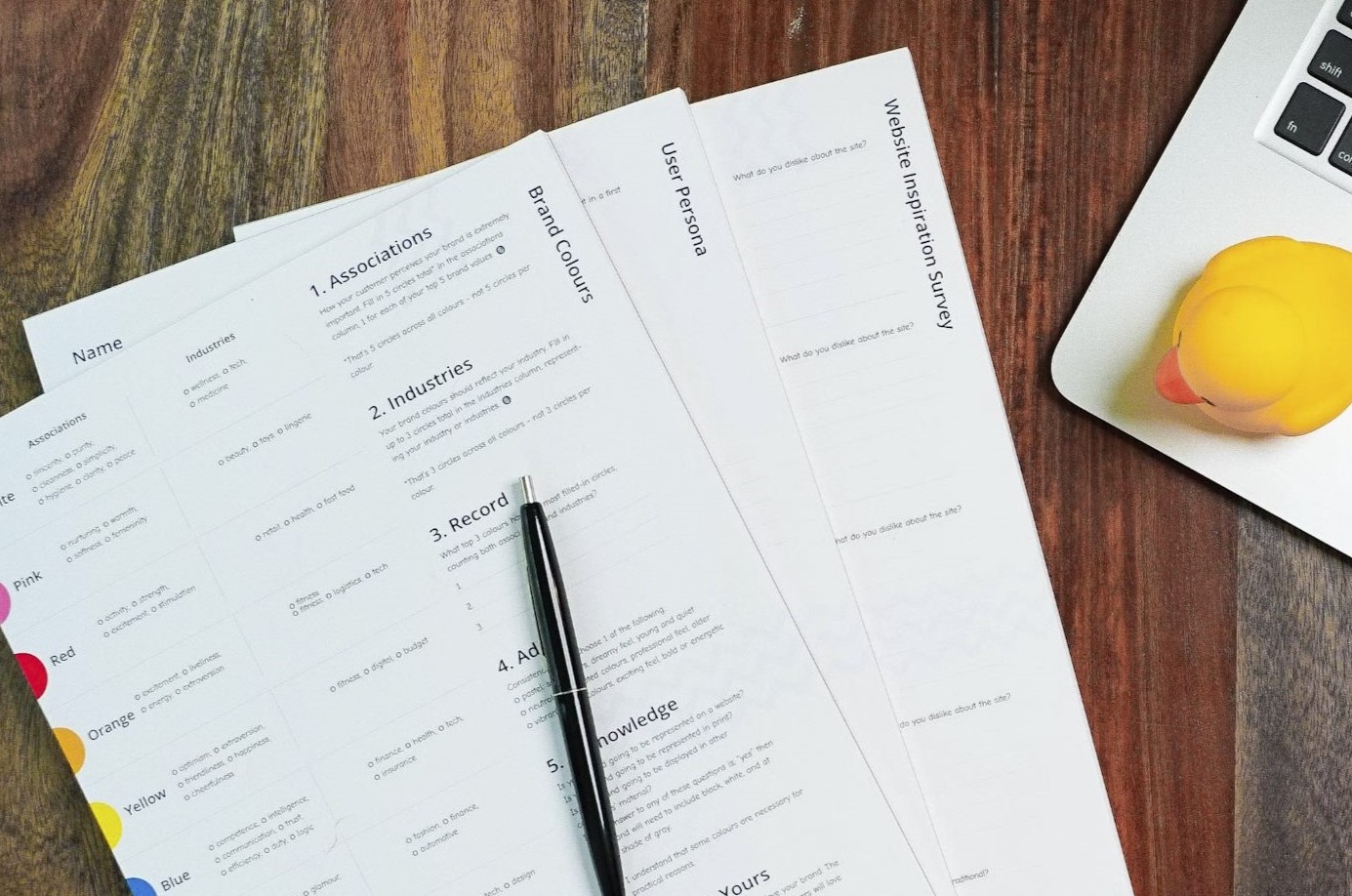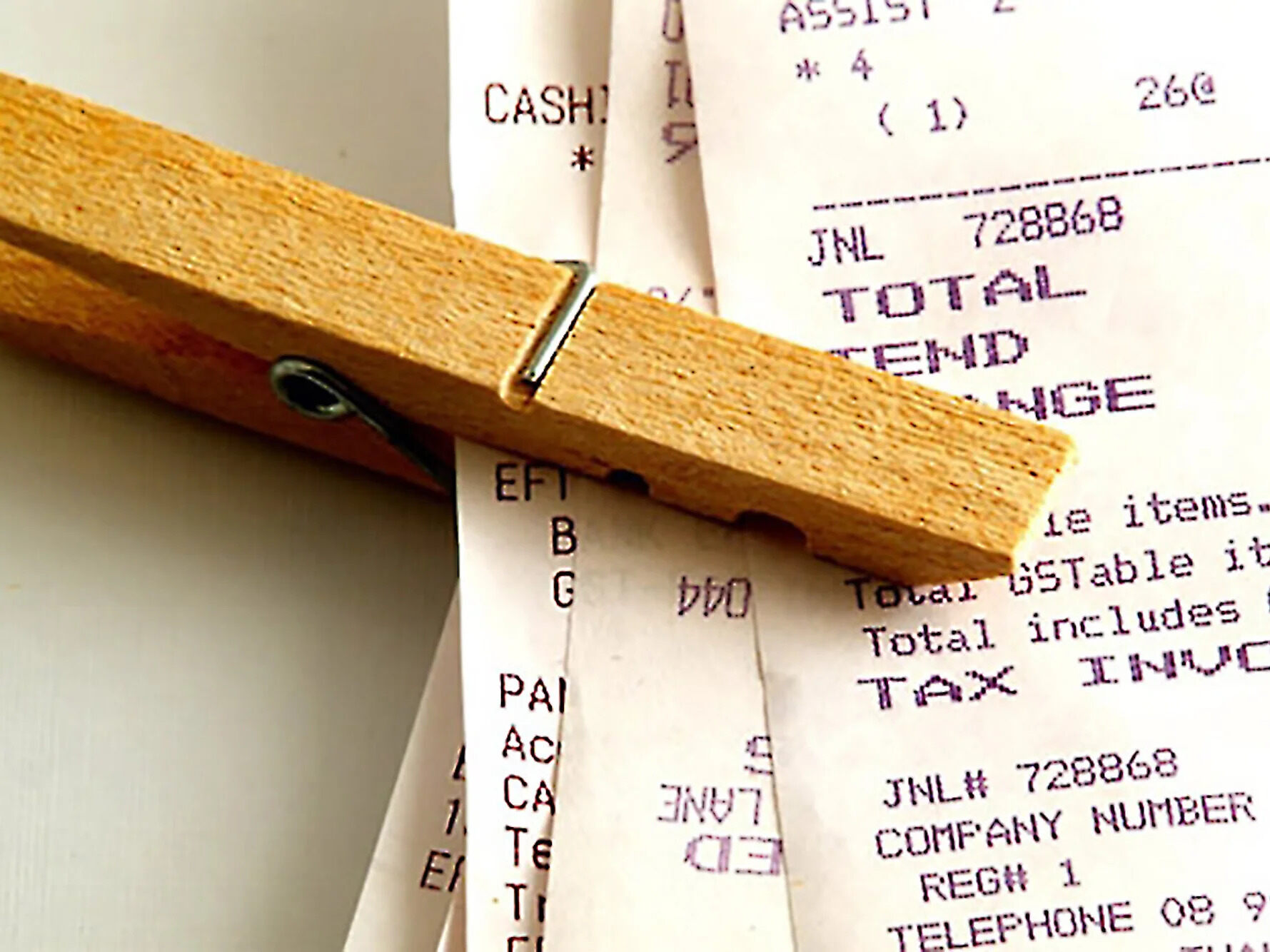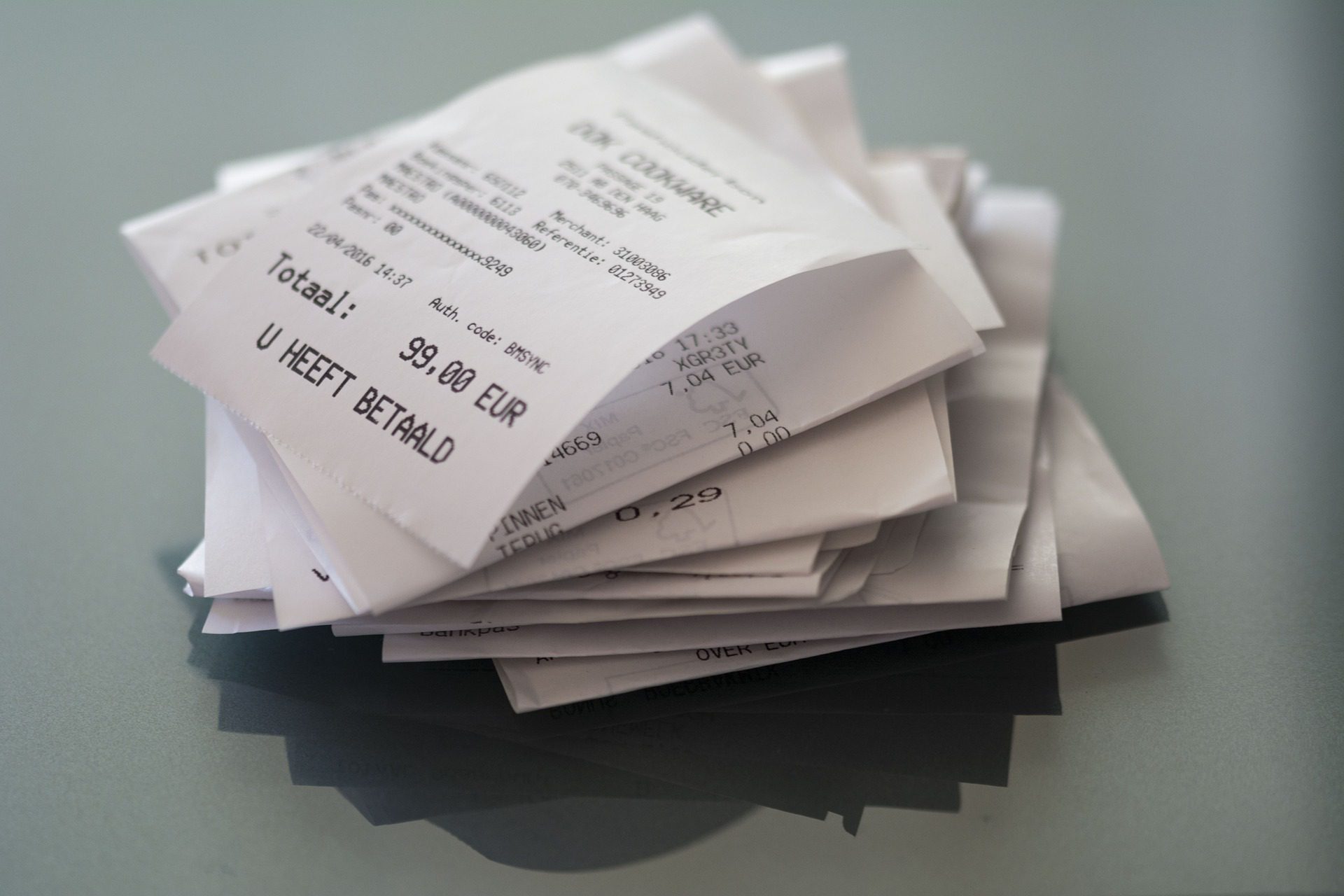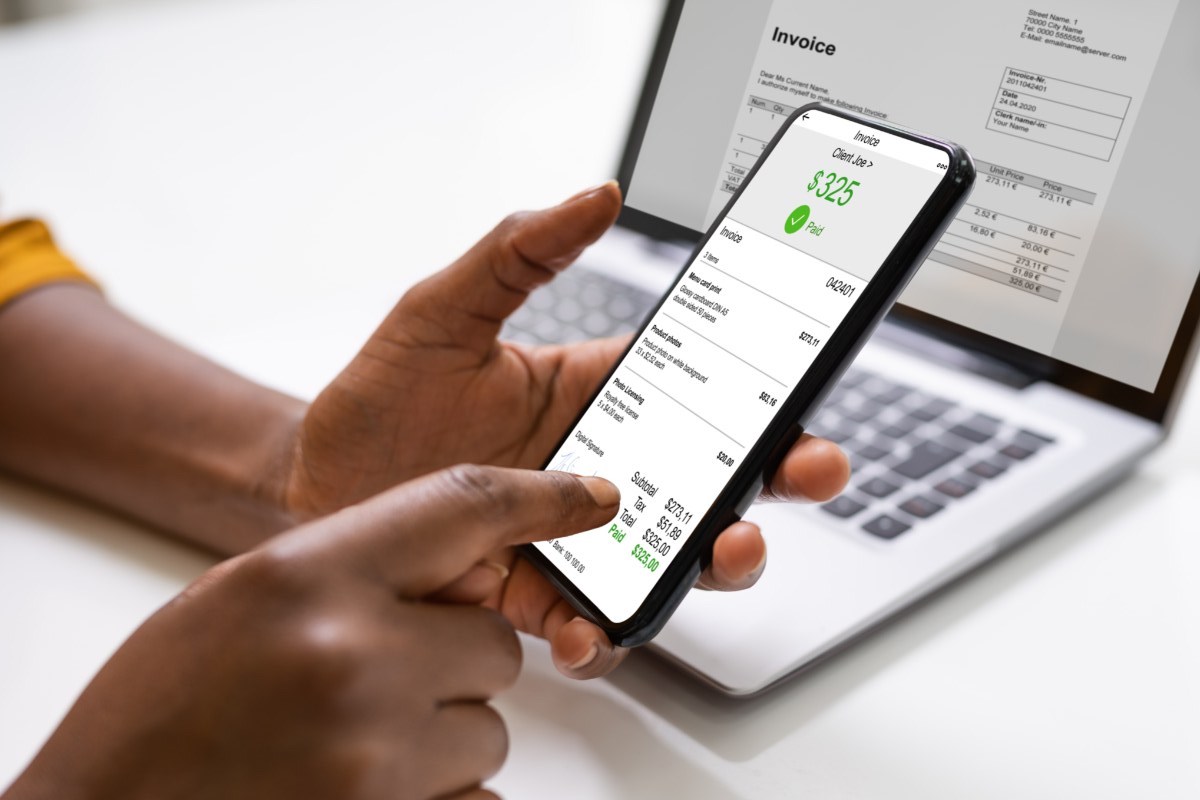Home>Technology>Home Office Tech>How To Organize Receipts For Business


Home Office Tech
How To Organize Receipts For Business
Published: March 2, 2024
Learn how to efficiently organize and manage your business receipts using home office tech. Streamline your record-keeping process and stay organized.
(Many of the links in this article redirect to a specific reviewed product. Your purchase of these products through affiliate links helps to generate commission for Storables.com, at no extra cost. Learn more)
Importance of Organizing Receipts
Organizing receipts for your business is crucial for several reasons. First and foremost, it helps you keep track of your expenses and maintain accurate financial records. This is essential for tax purposes and can save you a lot of time and stress during tax season. Additionally, organized receipts make it easier to monitor your spending, identify areas where you can cut costs, and maintain a clear overview of your financial health. Moreover, having well-organized receipts can also be beneficial in the event of an audit, as it provides concrete evidence of your business transactions. Overall, the importance of organizing receipts cannot be overstated, as it directly impacts your financial management and the overall success of your business.
Key Takeaways:
- Keep all receipts for purchases, travel, utilities, client services, and maintenance. Organizing receipts helps track expenses, claim tax deductions, and prepare for audits, ensuring accurate financial records and business success.
- Use the envelope system, accordion file, or digital tools to organize receipts. Embrace digital receipt management for modern efficiency, and maintain physical receipt organization for traditional effectiveness. Consistent review and best practices ensure an efficient system.
Read more: How To Store Receipts For Business
Types of Receipts to Keep
When it comes to organizing receipts for your business, it's essential to know which types of receipts to keep. This ensures that you have the necessary documentation for your expenses and can substantiate your financial records when needed. Here are the key types of receipts to keep:
-
Purchases: Receipts for any purchases related to your business, such as office supplies, equipment, or inventory, should be kept. These receipts serve as evidence of your business expenses and can be used to claim tax deductions.
-
Travel Expenses: Receipts for travel-related expenses, including airfare, hotel stays, car rentals, and meals, should be retained. These are crucial for tracking your business travel costs and can be deducted from your taxes.
-
Utilities and Rent: Keep receipts for utility payments, rent, and property-related expenses. These receipts are important for documenting your overhead costs and can be used to calculate deductions for your business space.
-
Client Services: If you provide services to clients, keep receipts for any expenses incurred during the provision of these services. This may include materials, subcontractor payments, or other related costs.
-
Maintenance and Repairs: Receipts for maintenance and repair work on business property, equipment, or vehicles should be organized. These receipts are essential for tracking maintenance costs and can be used for tax purposes.
By categorizing and retaining these types of receipts, you can ensure that you have a comprehensive record of your business expenses, which is vital for financial management and compliance with tax regulations.
Methods for Organizing Receipts
Organizing receipts for your business can be approached in various ways, depending on your preference and the volume of receipts you handle. Here are some effective methods for organizing receipts:
-
Envelope System: This simple yet efficient method involves using labeled envelopes to store receipts based on categories such as office supplies, travel expenses, utilities, and client services. Each time you receive a receipt, simply place it in the corresponding envelope. This method is ideal for small businesses with a moderate number of receipts.
-
Accordion File: An accordion file with multiple sections provides a convenient way to organize receipts. Label each section according to expense categories and file the receipts accordingly. This method allows for easy access and retrieval of receipts when needed.
-
Expense Tracking Software: Utilize specialized expense tracking software or apps designed for businesses. These tools enable you to scan and store digital copies of receipts, categorize expenses, and generate reports. They offer a digital solution for organizing and managing receipts efficiently.
-
Cloud Storage: Embrace cloud storage services such as Google Drive, Dropbox, or OneDrive to store digital copies of receipts. Create separate folders for different expense categories and upload scanned receipts. This method ensures that your receipts are securely stored and easily accessible from any device.
-
Binder Organization: Use a three-ring binder with dividers to categorize and store receipts. Label each divider with an expense category and insert the corresponding receipts. This method provides a tangible and organized way to manage physical receipts.
-
Shoebox Method: While it may seem old-fashioned, the shoebox method can be effective for businesses with a high volume of receipts. Simply place all receipts in a designated shoebox and periodically sort and file them into respective categories.
By implementing these methods, you can establish a systematic approach to organizing your business receipts, ensuring that they are readily available for financial record-keeping and tax purposes. Choose a method that aligns with your organizational preferences and the specific needs of your business.
Consider using a digital receipt tracking system to organize and store your business receipts. This can help you easily access and categorize receipts for tax and accounting purposes.
Digital Receipt Organization
Digital receipt organization offers a modern and efficient approach to managing business expenses. With the prevalence of digital transactions and electronic receipts, it's essential to establish a structured system for organizing and storing digital receipts. Here's how you can effectively organize digital receipts for your business:
-
Utilize Expense Tracking Apps: Leverage the use of dedicated expense tracking apps that allow you to capture and store digital receipts. These apps often feature optical character recognition (OCR) technology, enabling you to scan receipts using your smartphone's camera and automatically extract relevant information such as the date, amount, and vendor. This streamlines the process of digitizing and categorizing receipts.
-
Create Digital Folders: Establish a clear folder structure on your computer or cloud storage platform to categorize digital receipts. Create separate folders for different expense categories, such as office supplies, travel expenses, utilities, and client services. This ensures that digital receipts are systematically organized and easily accessible when needed.
-
Implement Cloud Storage Solutions: Embrace cloud storage services such as Google Drive, Dropbox, or OneDrive to securely store digital receipts. These platforms offer the advantage of accessibility from any device with internet connectivity. By utilizing cloud storage, you can ensure that your digital receipts are backed up and protected from potential data loss.
-
Backup and Sync Receipts: Regularly back up and sync your digital receipts to prevent data loss. This can be achieved through automated backup solutions or by manually transferring receipts to an external hard drive or secondary cloud storage account. Implementing a robust backup strategy is crucial for safeguarding your digital receipt records.
-
Utilize Email Folders and Tags: If you receive digital receipts via email, create specific folders or labels within your email client to organize and archive receipts. This allows for easy retrieval and reference, especially when corresponding with specific transactions or vendors.
-
Implement Digital Receipt Management Software: Consider utilizing specialized receipt management software that is designed to handle digital receipts efficiently. These platforms often offer features such as receipt categorization, expense tracking, and integration with accounting software, providing a comprehensive solution for digital receipt organization.
By implementing these strategies, you can establish a streamlined and effective system for organizing digital receipts, ensuring that your business maintains accurate financial records and remains compliant with record-keeping requirements. Digital receipt organization not only enhances efficiency but also contributes to a more sustainable and environmentally friendly approach to managing business expenses.
Physical Receipt Organization
When it comes to physical receipt organization, traditional methods can still be highly effective for businesses that handle a significant volume of paper receipts. Here are practical strategies for organizing physical receipts:
-
Receipt Binder: Utilize a sturdy three-ring binder with dividers to categorize and store physical receipts. Label each divider with specific expense categories such as office supplies, travel expenses, utilities, and maintenance. Insert the corresponding receipts into the designated sections, ensuring that they are arranged chronologically for easy reference.
-
Expanding File Folder: An expanding file folder with multiple pockets provides a portable and organized solution for storing physical receipts. Label each pocket with expense categories and file the receipts accordingly. This method is convenient for businesses that require mobility and quick access to receipts.
-
Receipt Envelopes: Use labeled envelopes to segregate and store physical receipts based on their respective expense categories. This simple yet effective method allows for easy retrieval and storage of receipts, especially for businesses with moderate receipt volumes.
-
File Box or Cabinet: For businesses with a high volume of physical receipts, a dedicated file box or filing cabinet can be used to organize and store receipts. Create individual folders within the box or cabinet for different expense categories, ensuring that receipts are neatly arranged and easily accessible.
-
Receipt Scanner: Invest in a receipt scanner to digitize physical receipts and create digital copies for electronic storage. This allows for the consolidation of physical receipts into a digital format, reducing clutter and facilitating efficient organization.
-
Color-Coded Labels: Implement a color-coded labeling system to visually differentiate expense categories. Assign specific colors to different types of expenses and use color-coded labels on receipt folders, dividers, or envelopes for quick identification.
By implementing these physical receipt organization strategies, businesses can effectively manage their paper receipts, ensuring that they are systematically organized and readily available for financial record-keeping and tax compliance. It's important to establish a consistent routine for filing and organizing physical receipts to maintain an efficient and well-structured system.
Read more: How To Store Business Receipts
Best Practices for Maintaining Organized Receipts
Maintaining organized receipts is not just about initial organization; it also involves consistent practices to ensure that your system remains efficient and reliable. Here are some best practices for maintaining organized receipts for your business:
-
Regular Review and Update: Set aside dedicated time intervals, such as weekly or monthly, to review and update your receipt organization system. This includes filing new receipts, removing any outdated or irrelevant ones, and ensuring that all records are up to date.
-
Consistent Categorization: Maintain consistency in categorizing your receipts to facilitate easy retrieval and analysis. Whether organizing digital or physical receipts, adhere to a standardized categorization method to avoid confusion and streamline the process of locating specific expenses.
-
Backup and Data Security: Implement robust backup procedures for digital receipts to prevent data loss. Regularly back up your digital receipt records to secure storage locations and consider utilizing encryption methods to protect sensitive financial information.
-
Shred Outdated Receipts: For physical receipts that are no longer relevant for record-keeping or tax purposes, securely shred and dispose of them to declutter your filing system. This practice helps maintain the efficiency of your physical receipt organization and minimizes unnecessary storage.
-
Audit Preparation: Keep in mind the potential need for organized receipts during audits or financial reviews. Ensure that your receipt organization system is designed to facilitate easy retrieval and presentation of records, should the need arise.
-
Integration with Accounting Software: If you use accounting software for your business, ensure that your receipt organization system is compatible with the software. This may involve integrating digital receipt management tools or establishing a process for transferring organized data to your accounting platform.
-
Employee Training and Compliance: If your business involves multiple employees handling receipts, provide training on the organization system and compliance with record-keeping practices. Clear guidelines and training can help maintain consistency and accuracy in receipt organization across the organization.
-
Document Retention Policy: Establish a document retention policy that outlines the duration for which receipts should be retained based on legal and business requirements. This policy ensures that you retain necessary records while avoiding unnecessary accumulation of outdated documents.
By incorporating these best practices into your receipt organization strategy, you can ensure that your business maintains a well-structured and efficient system for managing receipts. Consistent maintenance and adherence to best practices contribute to accurate financial records, streamlined tax compliance, and overall operational efficiency.
Frequently Asked Questions about How To Organize Receipts For Business
Was this page helpful?
At Storables.com, we guarantee accurate and reliable information. Our content, validated by Expert Board Contributors, is crafted following stringent Editorial Policies. We're committed to providing you with well-researched, expert-backed insights for all your informational needs.















0 thoughts on “How To Organize Receipts For Business”